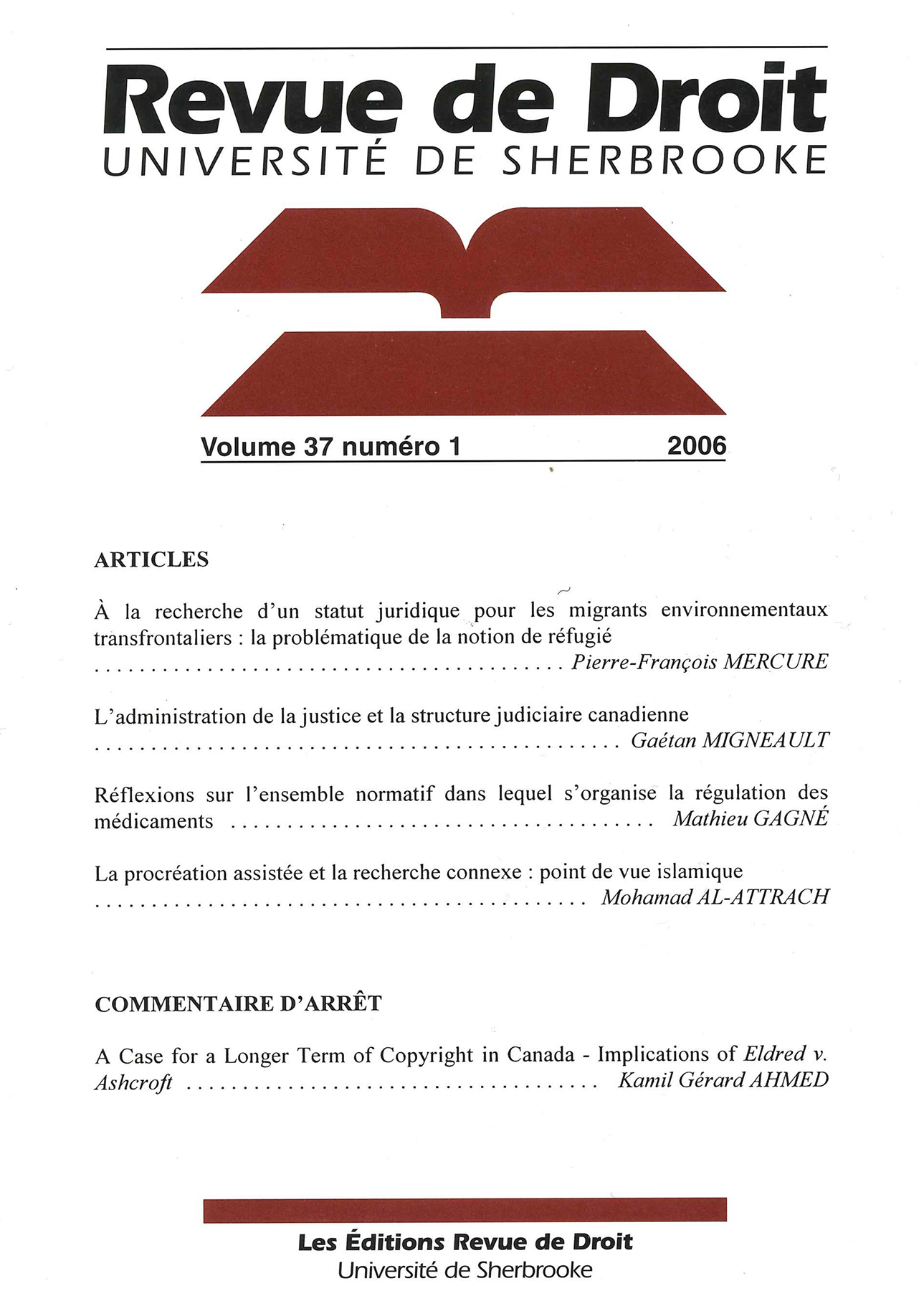Abstracts
Résumé
Malgré que l’alinéa 92(14) de la Loi constitutionnelle de 1867 attribue aux provinces une compétence large en matière d’administration de la justice, qui comprend la création et l’organisation de tribunaux de justice, la jurisprudence s’est servie de l’article 96 pour en atténuer la portée. Ceci a fait en sorte que la structure judiciaire existant à l’époque de la Confédération s’est vue accorder un statut constitutionnel. De l’autre côté, le Parlement canadien ne semble pas avoir été soumis aux mêmes contraintes, possédant le pouvoir d’attribuer de larges compétences aux tribunaux établis sous le régime de ses lois. Les seules restrictions qui paraissent avoir été reconnues visent les domaines de droit criminel, constitutionnel et intéressant les provinces. Ainsi, le fédéral serait habilité à retirer des cours supérieures toute autre matière qui relève de ses compétences législatives, en autant que ce soit pour les transférer à un tribunal établi en vertu de l’article 101 de la Loi constitutionnelle de 1867. Ceci suggère que la protection des cours supérieures découlant de l’article 96 se limiterait essentiellement aux mesures provinciales.
Il semble qu’il aurait été possible d’attribuer un sens utile à l’article 96 sans pour autant amputer un segment important de la compétence provinciale en matière d’administration de la justice. En coulant la structure judiciaire dans un moule plutôt rigide, la capacité des provinces d’y effectuer des réformes importantes a grandement été limitée, accroissant du même coup les risques qu’elle ne devienne désuète avec les années. C’est sûrement l’un des rares cas où il est possible d’affirmer que la Constitution a reçu une interprétation foncièrement statique.
Abstract
Even though s-s. 92(14) of the Constitution Act, 1867 grants to the provinces a wide jurisdiction over the administration of justice, which includes the constitution and organization of courts, the case law has used s. 96 to limit its scope. This has had the effect of giving constitutional status to the judicial system in existence at the time of Confederation. On the other hand, the Parliament of Canada does not appear to have been subjected to the same constraints, allowing it to confer broad powers to the courts established under its jurisdiction. The only restrictions that seem to have been applied are in the fields of criminal and constitutional law and provincial concerns. Thus, the federal Parliament would be empowered to withdraw from superior courts any other matter within its legislative competence, as long as the jurisdiction is transferred to a s. 101 tribunal. This suggests that s. 96 protects superior courts mostly against provincial measures.
It would have been possible to preserve the essence of s. 96 without eliminating a fundamental aspect of the provinces’ competence over the administration of justice. By fixing the judicial system into a rather rigid mould, the ability of the provinces to carry out substantial reforms has been greatly limited, increasing the risk that the structure will become outdated as the years go by. It is surely one of the rare occasions where the Constitution has been given what is fundamentally a static interpretation.
Download the article in PDF to read it.
Download

